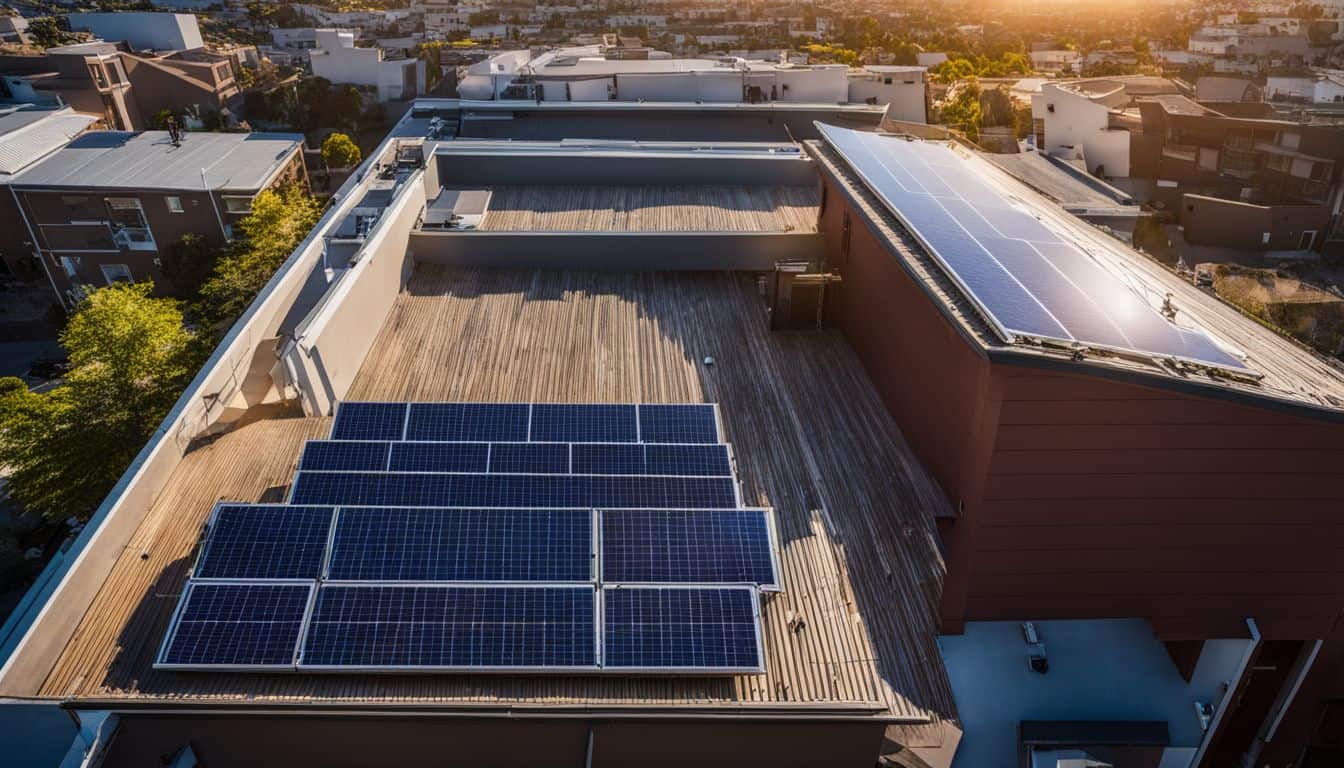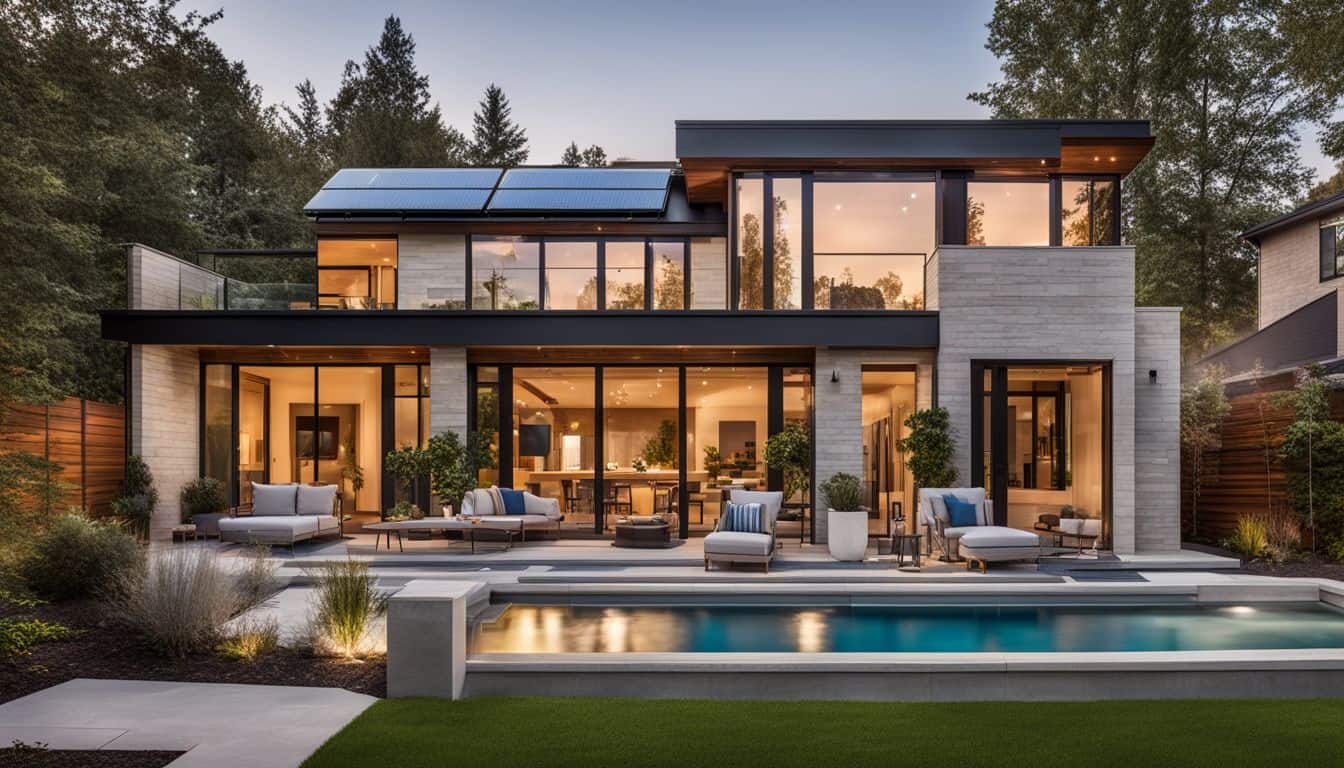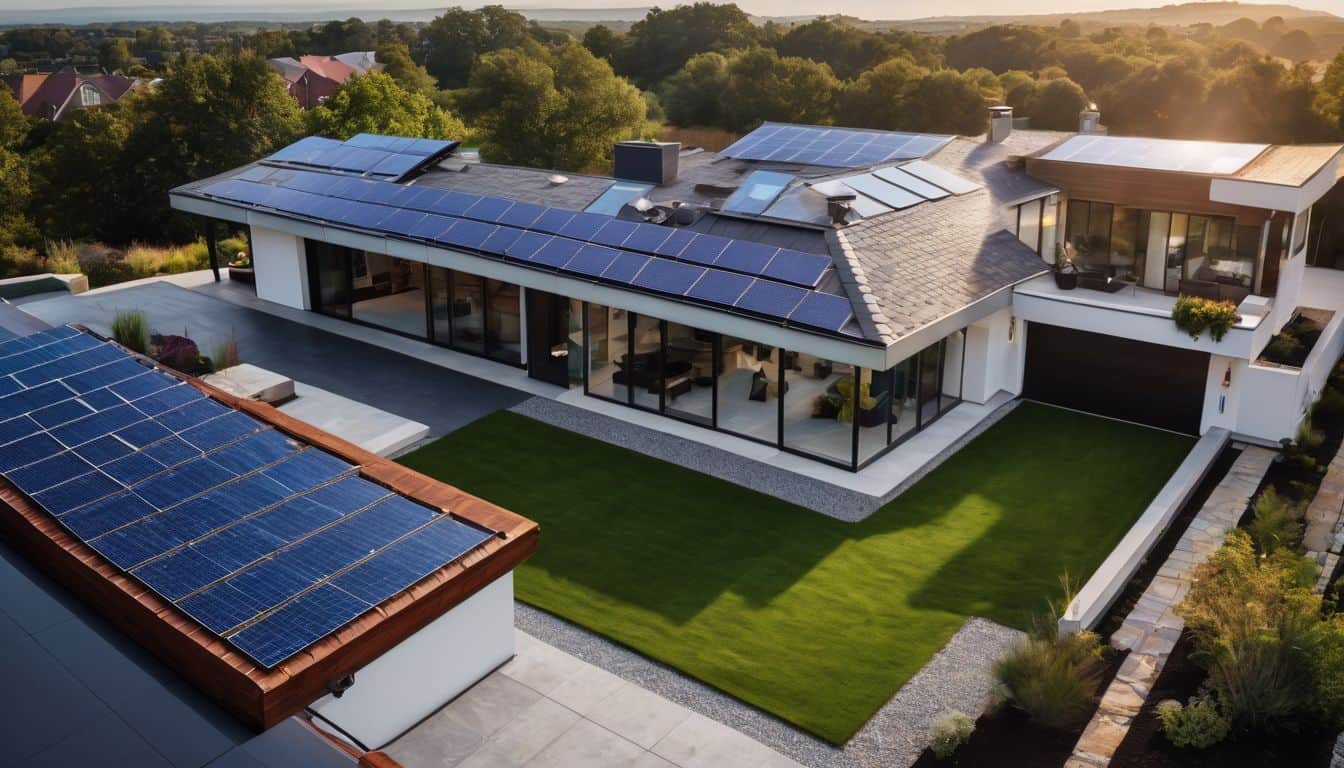As solar heating technology evolves, the focus has shifted beyond mere functionality to encompass aesthetic appeal. This shift is crucial in driving wider adoption of solar heating systems, particularly in residential settings where homeowners are increasingly conscious of their property’s visual appeal. Let’s explore the exciting design trends reshaping the world of solar heating panels.
Evolution of Solar Panel Aesthetics
Gone are the days when solar panels were bulky, obtrusive additions to a home’s roof. The evolution of solar panel design has been dramatic, moving from traditional utilitarian designs to modern, sleek approaches that complement contemporary architecture. This transformation is not just about looks; it’s about creating solar solutions that homeowners proudly showcase on their properties.
Key Design Trends in Solar Heating Panels
All-Black Solar Panels
One of the most striking trends in solar panel design is the rise of all-black panels. These panels offer a sophisticated, monolithic appearance that blends seamlessly with many roof types. Beyond their enhanced visual appeal, all-black panels often boast improved efficiency due to their ability to absorb more sunlight.
Integrated Solar Roof Tiles
Perhaps the most revolutionary trend in solar design is the development of integrated solar roof tiles. Products like the Tesla Solar Roof have pioneered this concept, offering a complete roofing solution that generates solar power without needing separate panels. These systems are indistinguishable from high-end roofing materials, making them an attractive option for homeowners who want solar power without compromising their home’s aesthetics.
Frameless and Thin-Film Solar Panels
For those seeking a minimalist aesthetic, frameless and thin-film solar panels offer an elegant solution. These panels have a sleek, low-profile appearance and can be applied to a broader range of surfaces due to their flexibility. This versatility opens up new possibilities for solar integration in residential and commercial settings.

Building-Integrated Photovoltaics (BIPV)
BIPV takes solar integration to the next level by incorporating solar technology directly into building materials. From solar windows to entire solar facades, BIPV transforms ordinary architectural elements into dual-purpose features that generate clean energy while maintaining the building’s aesthetic integrity.
Customization and Color Options
The days of one-size-fits-all solar panels are over. Modern manufacturing techniques allow for various customization options, including colored solar cells and patterned panels. These advancements enable homeowners to match their solar installations to their roof aesthetics, ensuring a cohesive look that enhances rather than detracts from their home’s appearance.
Smart and Connected Solar Systems
Design trends in solar heating panels extend beyond the panels to encompass the entire solar ecosystem. Sleek, unobtrusive inverter designs and integrated monitoring systems contribute to a cleaner, more streamlined look. App-controlled solar heating systems offer convenience and a modern, tech-savvy aesthetic that appeals to many homeowners.
For those interested in maximizing the benefits of their solar heating system, learning about integrating solar heating panels with home heating can provide valuable insights into creating a comprehensive home energy solution.
Innovative Shapes and Layouts
Breaking away from the traditional rectangular panel design, innovative shapes, and layouts are emerging to cater to unique architectural needs. Curved solar panels can now conform to rounded roof structures, while artistic solar installations transform panels into decorative elements that enhance a building’s visual appeal.
Sustainability in Design
The focus on aesthetics hasn’t come at the cost of sustainability. Many modern solar panel designs incorporate eco-friendly materials and recyclable components, reducing the carbon footprint of manufacturing. This commitment to sustainability extends the environmental benefits of solar energy beyond just clean power generation.
Impact of Design Trends on Adoption
These design innovations are significantly impacting solar adoption rates. By addressing aesthetic concerns, modern solar panel designs are overcoming one of the primary objections to solar installations in residential areas. Integrating solar technology with modern architecture makes it easier for homeowners to embrace solar heating without compromising their home’s appearance.
Future Outlook
As technology advances, we can expect even more exciting developments in solar panel design. The future may bring solar panels that are virtually invisible and seamlessly integrated into building materials in ways we can hardly imagine today. The key will be maintaining the delicate balance between efficiency and design, ensuring that aesthetic improvements don’t come at the cost of performance.
Mastering solar heating panels can provide a comprehensive understanding of both current technologies and emerging trends for homeowners looking to stay ahead of the curve.

Conclusion
The design trends in solar heating panels represent a significant leap forward in the technology’s evolution. By blending efficiency with aesthetics, these innovations are making solar heating more attractive and accessible to a wider range of homeowners.
As solar technology advances, we can expect even more exciting developments that will further integrate clean energy generation into the fabric of our built environment. The future of solar heating is not just efficient; it’s beautiful, too.
FAQS
What are photovoltaic slates, and how do they combine style with solar technology?
Photovoltaic slates are an innovative solar panel design that seamlessly integrates with traditional roofing materials:
- They mimic the appearance of conventional roof slates while incorporating solar cells to generate clean energy
- This design allows homeowners to maintain a classic, timeless look while harnessing the power of the sun
- Photovoltaic slates offer an aesthetically pleasing alternative to traditional, bulky solar panels
How do smart solar panel systems help homeowners track energy production?
Smart solar panel systems feature advanced monitoring capabilities that empower homeowners to track their energy generation:
- These systems use sensors and software to collect real-time data on solar panel performance
- Homeowners can access this information through user-friendly apps or web portals
- By monitoring energy production, homeowners can identify any issues and optimize their solar panel setup for maximum efficiency
What advancements have been made in solar panel installation processes?
Recent design trends have focused on simplifying and streamlining the solar panel installation process:
- Many modern solar panels feature modular, plug-and-play designs that reduce the need for complex wiring or extensive professional installation
- Some systems use innovative mounting hardware that allows for quick, secure attachment to various roof types
- These advancements make it easier and more affordable for homeowners to adopt solar technology
How do the latest solar panel materials enhance durability and weather resistance?
Cutting-edge solar panel materials are engineered to withstand the elements and provide long-lasting performance:
- Many panels now feature tempered glass and resilient backing materials that can endure impacts, hail, and extreme temperatures
- Some designs incorporate self-cleaning coatings that help prevent dust and debris buildup, maintaining optimal energy production
- These durable materials ensure that solar panels can continue generating clean energy for decades with minimal maintenance
What financial benefits can homeowners expect from installing solar heating panels?
Investing in solar heating panels can yield significant financial rewards for homeowners:
- By generating their own electricity, homeowners can dramatically reduce or even eliminate their energy bills
- Many solar panel systems pay for themselves over time through the accumulated savings on utility costs
- Government incentives, such as tax credits and rebates, can further offset the initial cost of installing solar panels
How do solar heating panels contribute to a greener lifestyle?
Incorporating solar heating panels into a home is a powerful way to embrace sustainability and reduce environmental impact:
- Solar energy is clean, renewable, and emits no greenhouse gases during operation
- By relying on solar power, homeowners can minimize their reliance on fossil fuels and decrease their carbon footprint
- Adopting solar technology supports the growth of the renewable energy sector and contributes to a cleaner, greener future for all

Leave a Reply